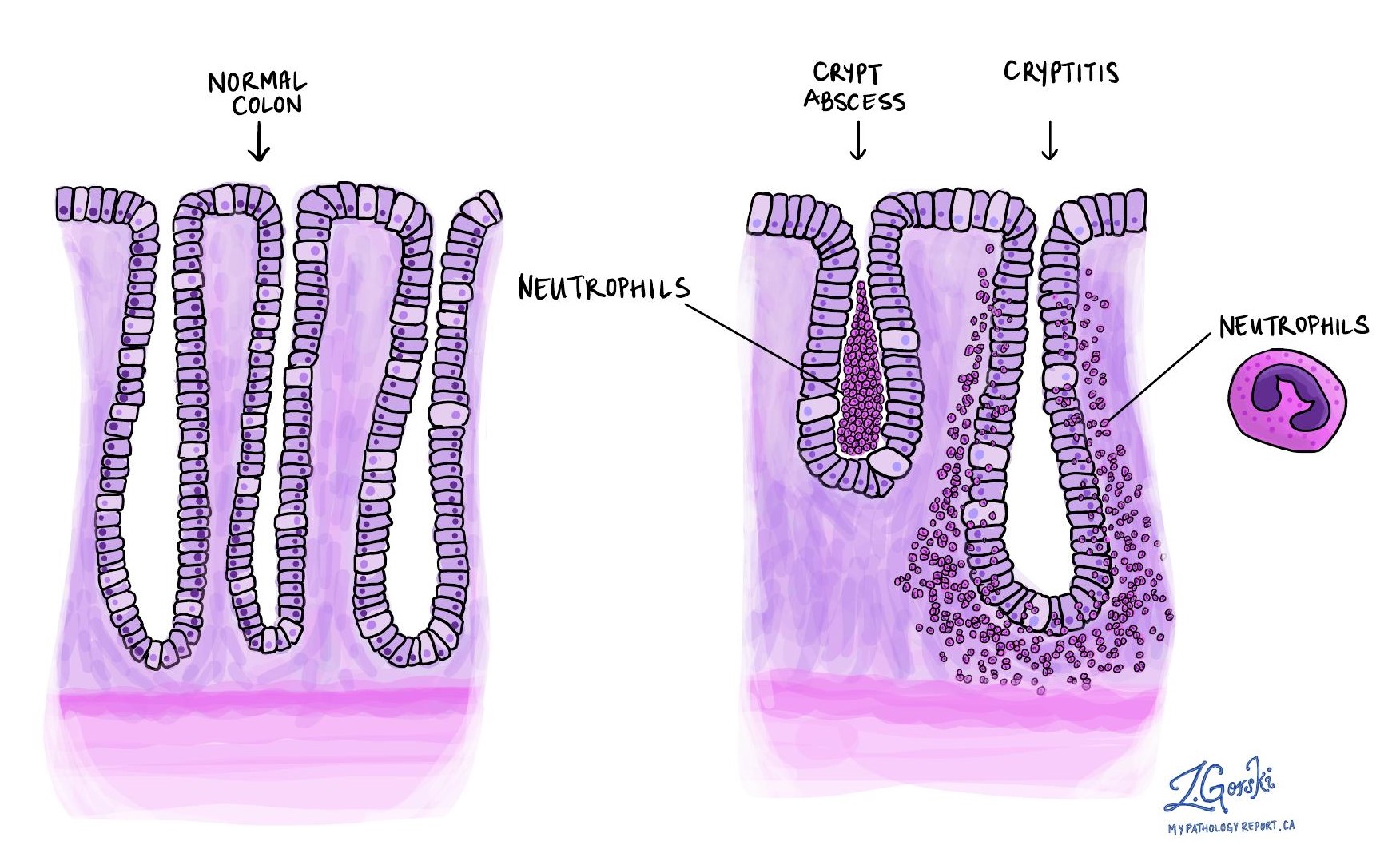A crypt abscess is a collection of specialized immune cells called neutrophils found inside the crypts of the colon. Crypts are small, tube-shaped glands that line the inside of the colon and help it function properly. When neutrophils accumulate within these crypts, it indicates acute (recent onset or active) inflammation. This condition is commonly observed in chronic active colitis, a condition associated with ongoing inflammation and injury in the colon.
What causes crypt abscesses?
Crypt abscesses can develop due to several different reasons.
Common causes include:
- Infections caused by bacteria or other pathogens.
- Inflammatory bowel diseases (IBD) like Crohn’s disease and ulcerative colitis.
- Medication-related inflammation, which can occur with certain drugs.
- Radiation therapy, mainly when directed at the abdomen or pelvis.
Crypt abscesses themselves are not a specific diagnosis but a sign of underlying inflammation or disease. Your doctor will consider your medical history and additional test results to identify the cause.
What do these changes look like under the microscope?
Under the microscope, pathologists identify crypt abscesses by observing neutrophils filling the open space within the crypts. Typically, crypts appear as straight, orderly tubes lined by epithelial cells. When neutrophils gather inside, they disrupt and damage these cells, impairing normal gland function. A related change called cryptitis occurs when neutrophils are present between the epithelial cells rather than inside the crypt. Both findings indicate active inflammation within the colon.



